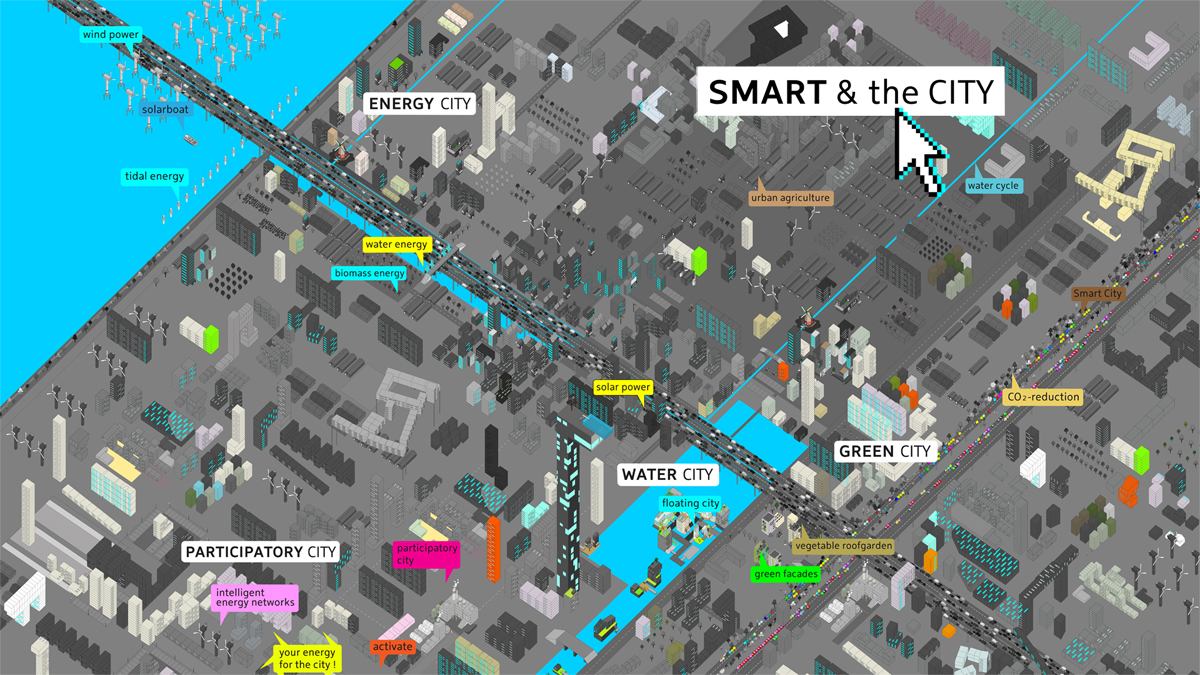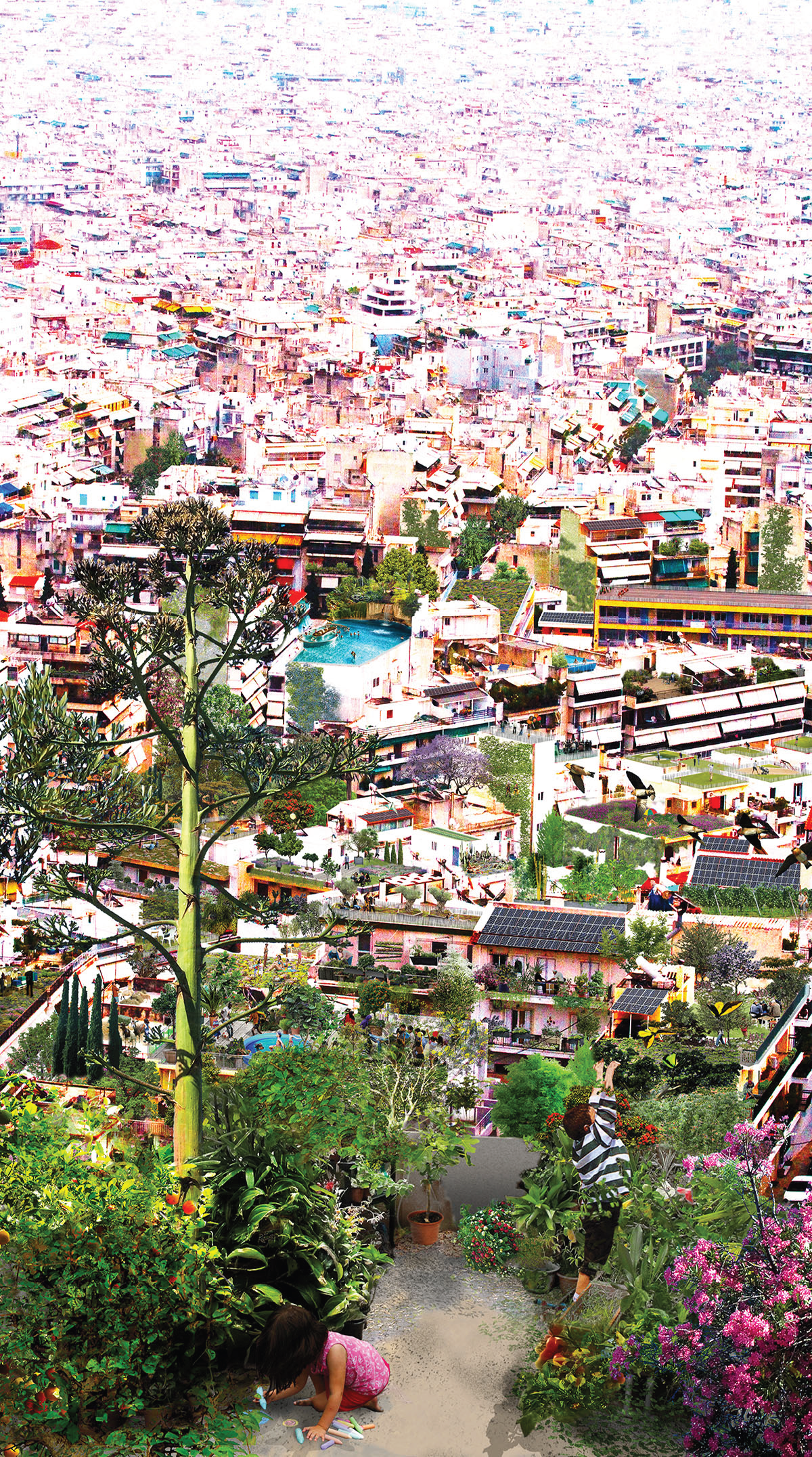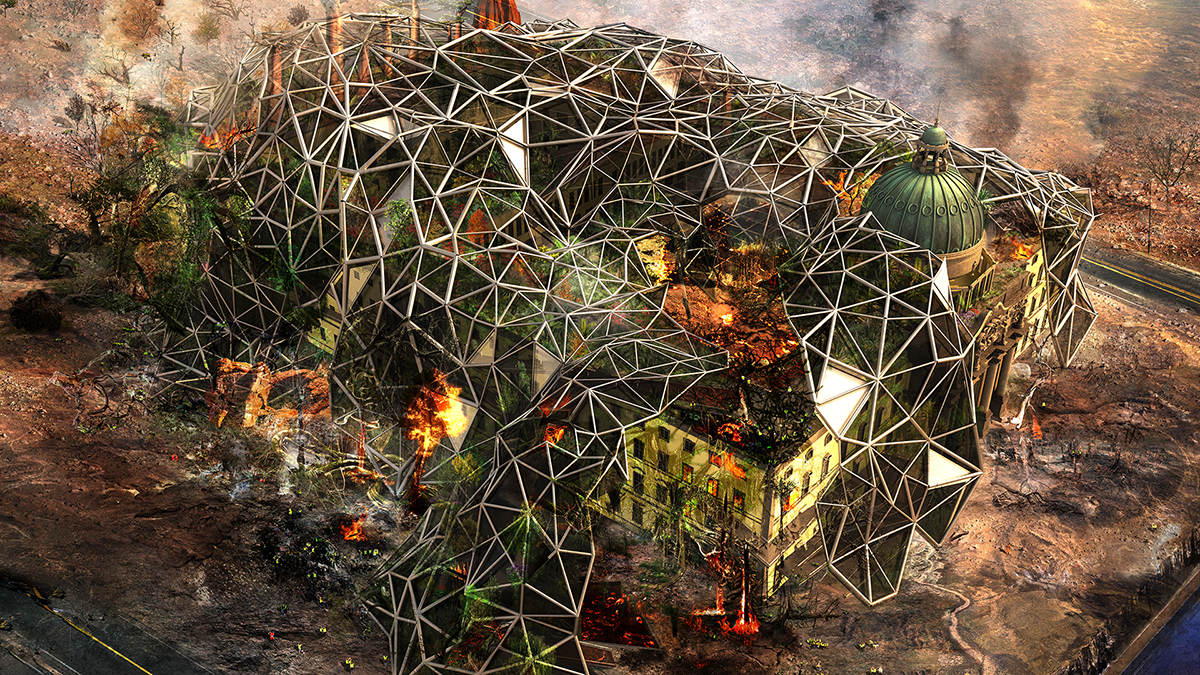Recent developments such as Internet of Things, Big Data and Machine Intelligence will algorithmically organize life, including urban nature.
These developments in technology and media are supporting the development of a new hybrid architecture where the digital, architecture and nature fuse.
Lecture NatureTecture @ V2 Institute for Unstable Media, Rotterdam, 9 April 2017
The coming together of the Digital Age with the challenges of the Urban Age (the largest part of humanity living in urban settlements) is summarized under the notion Smart City.
We are experiencing accelerating transformation processes driven by developments such as climate change, demographic explosion and urban growth as well as by technological acceleration with ubiquitous digitalization. The increasing complexity of the global challenges demand for interdisciplinary co-creating processes, involving society at large. The accelerating growth of megacities worldwide demands for optimization of limited resources in limited space. It also demands for the integration of many separate technical resources into one sustainable system of urban metabolism.
Due to global warming extreme weather conditions with intense precipitations and floods force us to restructure our cities. As information-communication networks becomes ubiquitous in the Internet of Things (IoT), Smart City applications are developed with the goal of improving the management of urban flows and allowing for real time responses to urban challenges.
Smart City offers urban informatics- and intelligent energy infrastructure-solutions aiming at improving the quality of urban life and supporting sustainable urban lifestyles. The increasing complexity of global challenges such as sustainability and climate adaptation demands for interdisciplinary approaches and co-designing processes.
Such a co-design process involves the public from the start.
The Smart City debate is still too much data driven, focusing on technology, efficiency and control.
The digital revolution supports the transition from centralized to distributed and interactive social networks. Social splintering, disruptive technologies and ‘permachange’ demand flexibility and a human oriented system. Smart City governance should involve the Smart Citizens, addressing issues such as “who owns the data?”, “who sets the optimization criteria?”, “what are the residents’ needs?”, and “what is our Smart City’s social vision? Society needs to define the challenges and to process the ideas and solutions that address these challenges.
And Smart City solutions should be more transparent engaging citizens in participatory processes of expert/user co-creation.
Poly Garden City is a participatory climate adaptation project for the city of Athens.
Poly Garden City considers the whole city as a canvas for ‘greening’: vegetable gardens on the balconies, gardens the spaces in-between the buildings, green rooftops with endemic plants, lively green terraces! As most streets in Athens are narrow and – (still) occupied by cars, a strategy committed to greening the city should focus on integrating green in the built environment.
Poly Garden City is a climate adaptation strategy very relevant for cities in the wider Eastern and South Mediterranean.In this ‘flat roof region’ processes of informal urbanization have produced settlements with very little or no space for urban green –and urban green is extremely important in climate regulation, mitigating heat-island effects, dealing with precipitations… We have therefore to literary ‘bring green on a higher level’, integrating it into the existing buildings. Anyway, in these semi-arid zones water, needed for irrigation of the plants, is mostly to be found within urban settlements.
‘Poly’ stands for the multitudes of the city. ‘Garden’ (‘gardening’) can be interpreted in a very broad, also metaphoric, sense, being connected to existential dimensions, to notions of post-materialism and to processes of community building.
Poly Garden City integrates green into Athens built environment by fusing buildings and gardens into new hybrid urban typologies, NatureTecture.
Following the concept NatureTecture that fuses buildings and nature we developed a project for the Berlin Humboldt Forum.
In Berlin, revivals of historic symbols and contemporary ideas on the transnational cultural development tie into the under construction Humboldt Forum.
In the heart of the city, opposite the Museumsinsel (Isle of Museums), the Humboldt Forum is the ambitious project that revives the exterior of the Kaisers’ palace establishing a cultural center of international renown, which will house, from 2019, next to the various ethnographic collections and the museum the city also a venue dedicated to the global “Dialogue of Cultures”.
Humboldt Jungle gives a more extrovert, more modern and more environmentally friendly form to the Humboldt Forum building. With the slogan “Jungle instead of concrete!”, it” proposes the greening of the facade with vegetation referring to the Amazon explorer Alexander von Humboldt. The funds for financing the Humboldt Forum facade have not been covered yet. This means that the possibility of consultation for alternative proposals are still remains open. Humboldt Jungle is representatives of the contemporary trend of ‘hybrid’ architecture that incorporates vegetation in built environment, fusing nature and architecture.
Humboldt Jungle received very broad publicity in Germany as the Humboldt Forum has caused an intense debate in bias point, as it involves issues of national symbols, the international role of the city and of cultural supranational networks.
Humboldt Volcano introduces as an extension of the palace a type greenhouse-pavilion with a vertical tropical garden. As an innovative flexible transparent structure, Humboldt Volcano contrasts with the historical appearance of the introverted power-radiating reconstruction of the Berlin palace, which houses Humboldt Forum. Humboldt Volcano enables the appropriation of the Humboldt Forum, opening it up to the city.
A drawing by Alexander von Humboldt was inspiration for the Humboldt Volcano greenhouse with the hanging gardens refers to the – pioneering for its time – discoveries of exotic flora and volcano explorations by Alexander von Humboldt.
The proposed “Humboldt Volcano” pavilion opens the palace to the public space, enhancing the extravert character of the building of the Humboldt Forum.
We are now developing the project further, covering the whole palace with a flexible greenhouse. It is a flexible building system based on triangulation that enables the integration of green into buildings. This Green Infrastructure enables the integration of nature into built environment. Supporting intelligent water management, it is very relevant for arid climates. Facilitating vertical farming it is of great relevance for megacities. Today’s agriculture is pioneering ‘smart’ developments, just to mention some aspects such as robotics and autonomous driving on farms, drones and satellite monitoring or transponder-implants. With the help of such green infrastructures, precision farming methods are informing Smart City development and enabling NatureTecture, as a hybrid architecture integrating nature in built environment.
* How will the Internet of Things merge with the green infrastructure of the city?
* How will technology, the urban environment and nature fuse?
related PROJECTS


